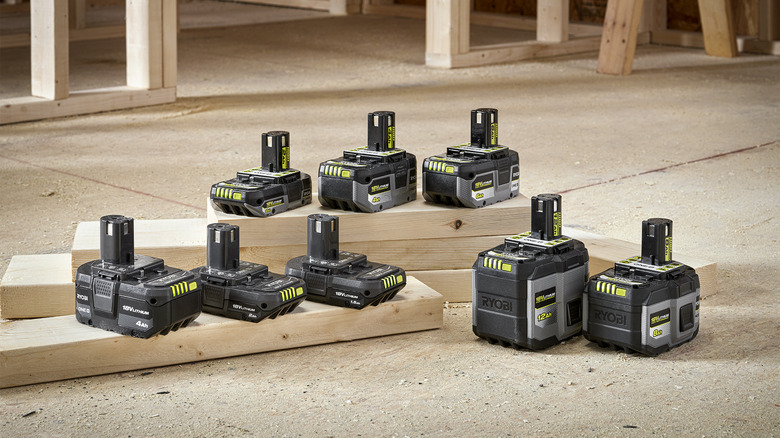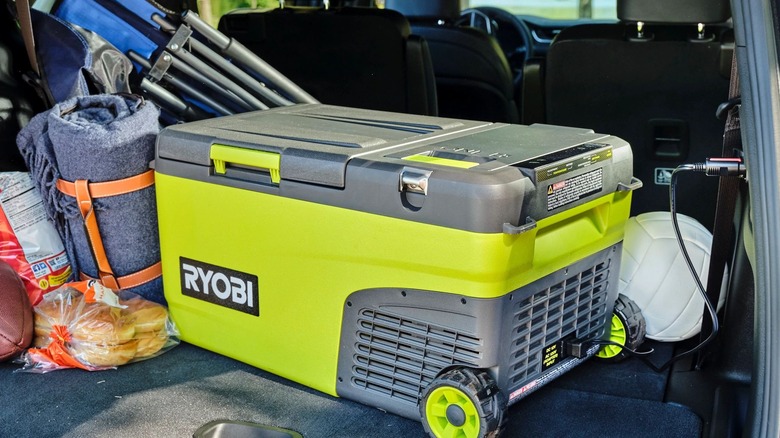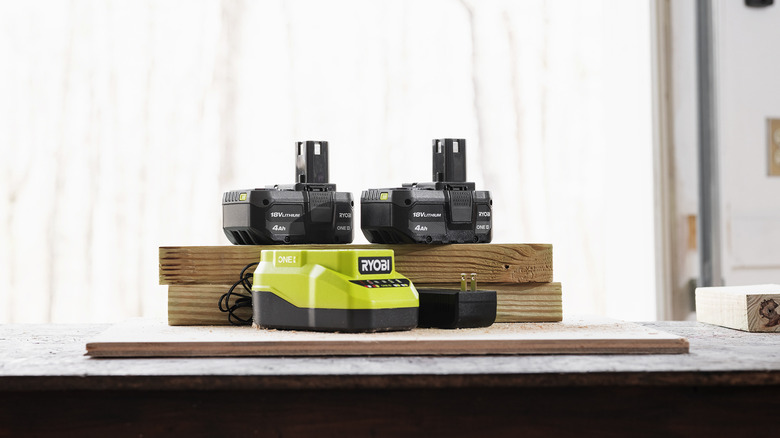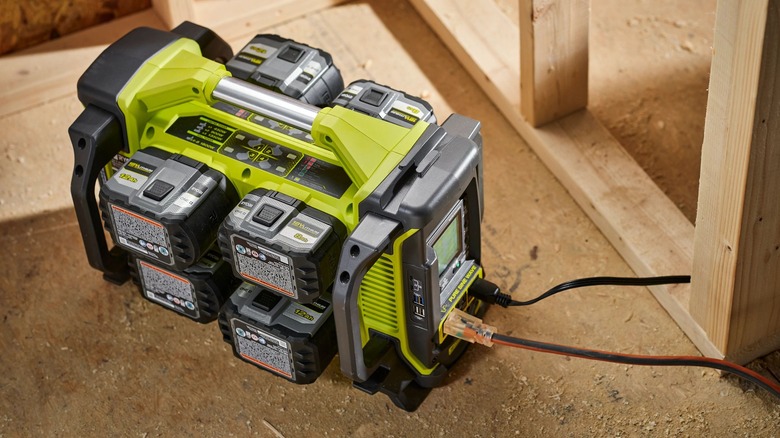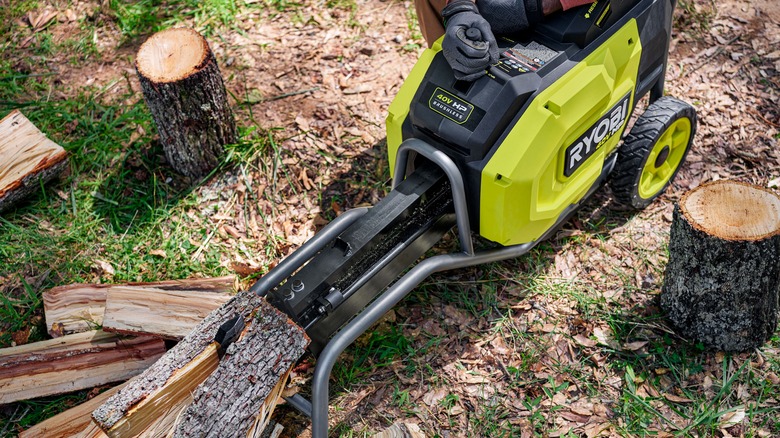4 Common Problems That Can Happen To Ryobi Batteries
A large number of the products produced by hardware brand Ryobi are part of its ONE+ line, meaning that they all rely on the same rechargeable battery packs. This is a convenient framework for the most part, as you can keep a few of these packs charged up around the house or workshop, and when your tools start getting thirsty for juice, quickly swap them out and snap them on. It's a great way to keep the power flowing to your vital work tools.
The battery packs utilized by Ryobi's ONE+ tools are designed to be long-lasting and reliable, but no matter how well-designed a tool is, nothing is completely immune to occasional faults. Sometimes, whether due to manufacturing errors, external factors like damage, mishandling, or something completely different, Ryobi's batteries can exhibit unusual or concerning behaviors. Be on the lookout for these particular problems in your Ryobi battery packs, as they could be a sign of either a defect or simple aging.
Reduced charge
The precise operating capacity of a Ryobi battery pack varies depending on the size of the battery you're using and what exactly you're using it for. For example, Ryobi's Hybrid Power Cooler utilizes an 18V battery pack, which is supposed to consistently power the device for up to 23 straight hours. Or, if you're using Ryobi's Cut-Out Tool, you're supposed to be able to get at least 190 complete cuts on a fully charged battery pack.
Considering these estimates, it's immediately disconcerting if your Ryobi battery isn't delivering at the projected rate. If your equipment can't seem to operate at the company-stated standards, burning through its charge faster than usual, that could be a sign of either a faulty battery or a problem with your Ryobi battery charger. If there's a physical problem with your battery or charger, it may not actually be storing its full charge or otherwise bleeding off energy even when not in use.
Poor charging
The standard Ryobi ONE+ Battery Charger boasts a reasonably quick charge rate, with its store page claiming that it can fully charge a 1.5Ah battery pack in around 45 minutes. Ryobi also offers a Rapid Charger, which, according to its store page, should be able to fully juice up a ONE+ 4Ah battery pack in under 30 minutes. Whether you're using the basic model or the Rapid model, the point is that your battery packs shouldn't be taking all day to charge back up. Therefore, if your battery pack takes longer than usual to charge or isn't charging at all, that's a bad sign.
The most common culprit in this circumstance is dirty or corroded connectors on the battery pack. This can arise from basic wear and tear over the years, though it could also be a product of an acid leak, which is more hazardous. In either circumstance, it may be time to retire the battery and get a fresh one.
Sudden shutdowns
Devices powered by Ryobi batteries are meant to be operated consistently and for long periods, such as the tools used by professional handymen and construction workers. This goes double for devices meant to provide power in general, such as Ryobi's 1,800-watt Power Station, which utilizes multiple battery packs at once to serve as a power hub for remote locations or in the event of a power outage. When a Ryobi battery starts getting low, it should gradually reduce its power output and offer obvious warning signs, giving you time to swap in a fresh pack.
However, in certain circumstances, your Ryobi battery pack may suddenly shut down entirely, even if you're reasonably certain that it should have multiple hours left on its charge. Similarly to the regular power bleed-off that comes with device aging, this could result from either manufacturing defects or simple wear and tear. Either way, it's a very frustrating problem, and more than likely, it will necessitate a complete battery replacement.
Overheating
All electronic devices, big and small, output heat when they're in use. You know how a bolt of lightning can set things on fire? It's the same thing, albeit on a much smaller scale. Electricity generates heat, which gradually dissipates through a device's surface. Ryobi batteries are no exception to this — when you use a Ryobi battery-powered device for a long stretch of time, it's going to get a little warm, but not so warm that you can't physically touch it.
It's when the battery becomes so hot that it's both hazardous to handle and can't operate properly that you officially have a problem. In most circumstances, this results from prolonged usage combined with poor external conditions, like working outside on a hot day. However, this can also arise if you leave your batteries on the charger for too long or if your battery has a physical defect.
